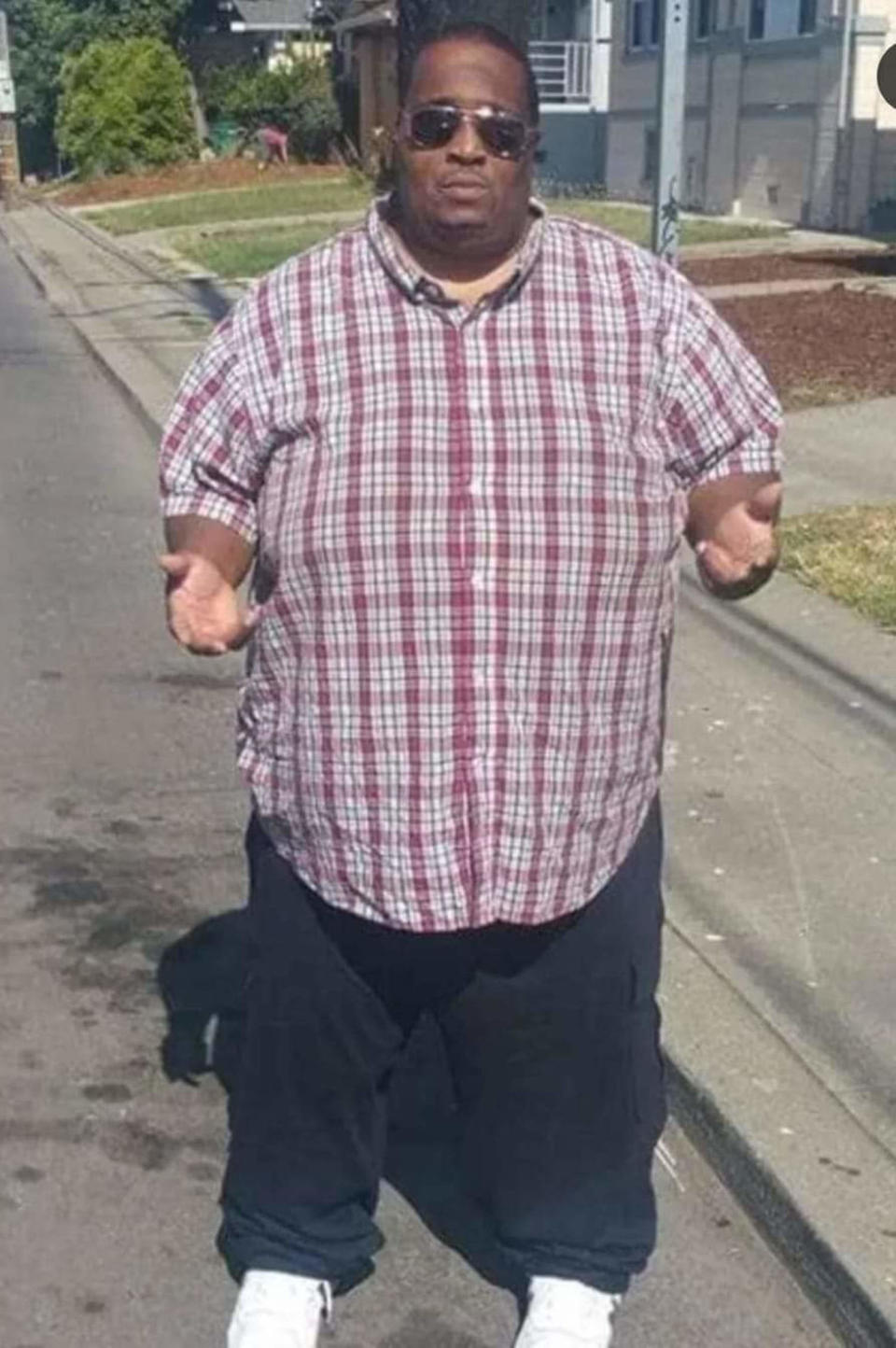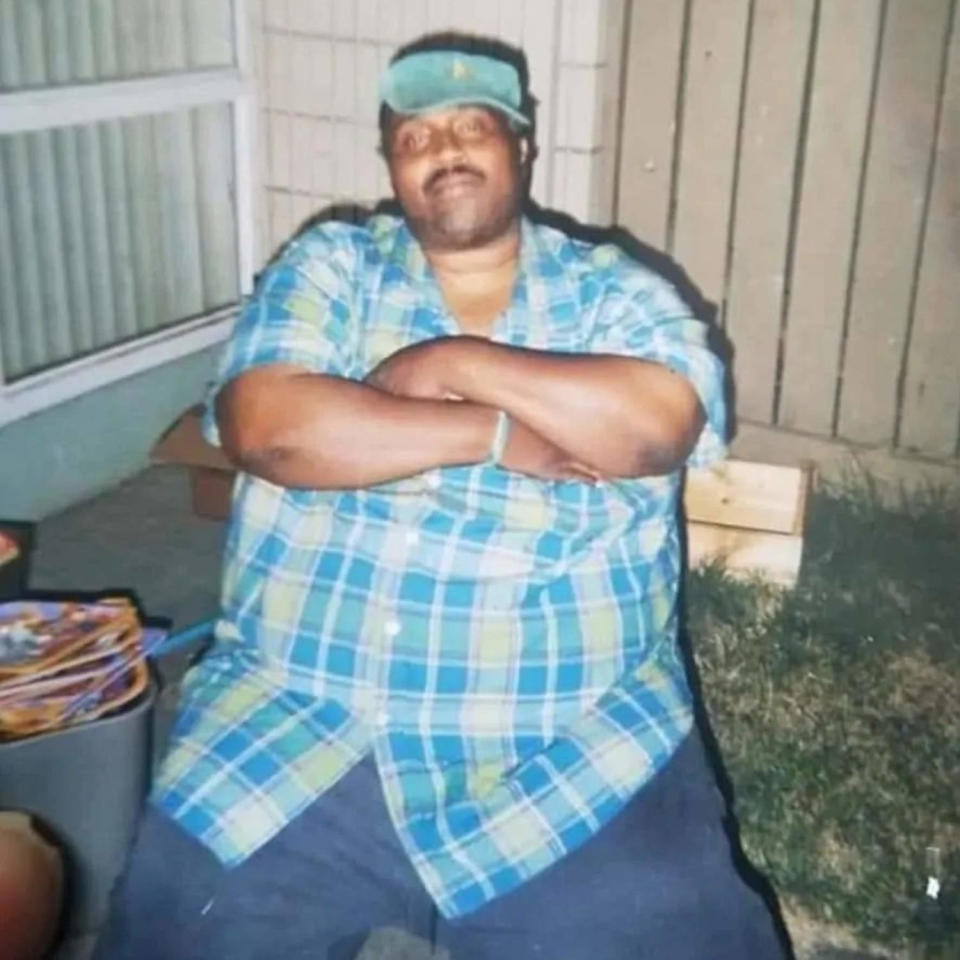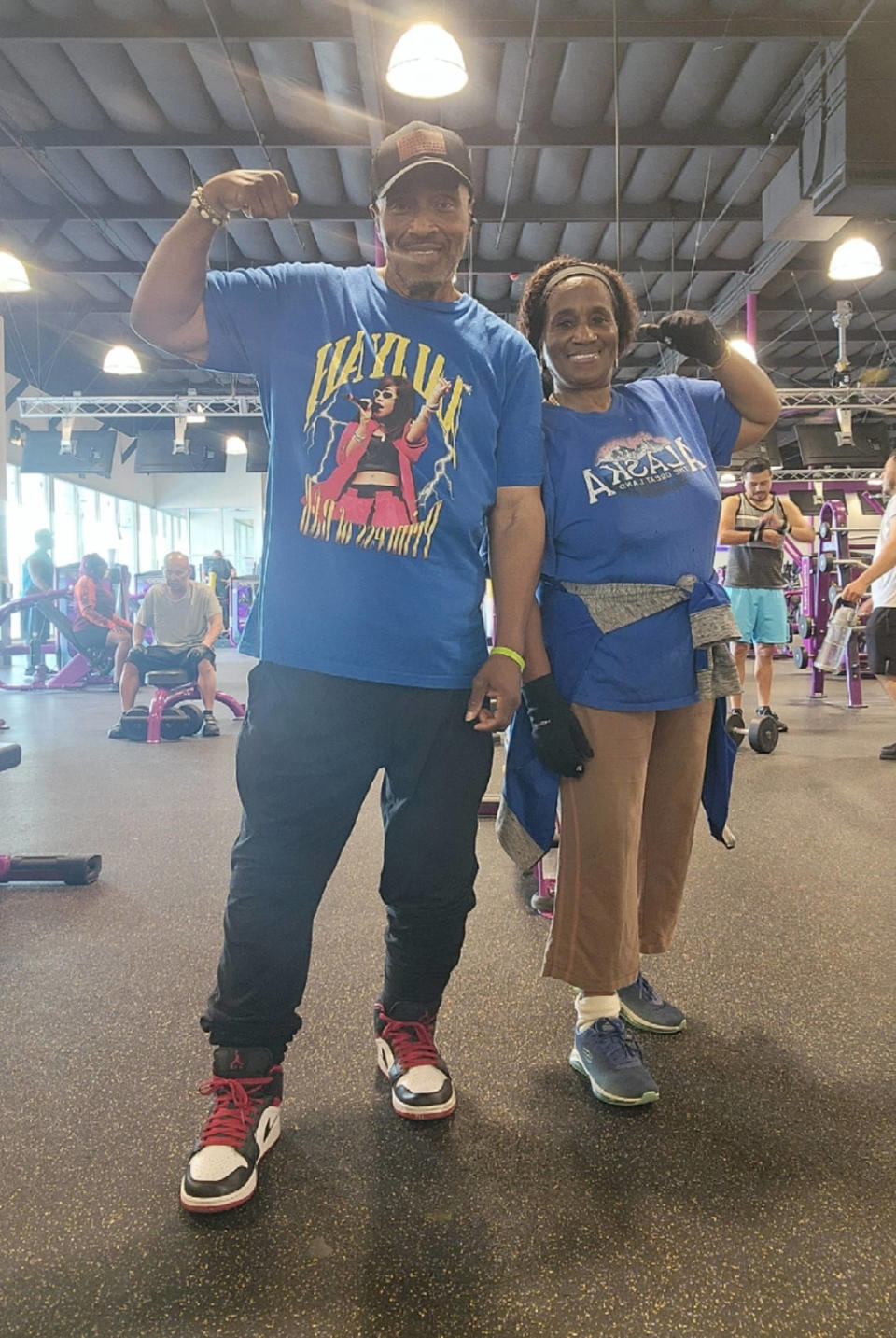Amputation motivates 1 man to lose 285 pounds: 'I'm never going to lose another body part'
In November 2021, Robert Jones of Oakland, Calif., went to the emergency room. He thought his right big toe was infected, and he had a fever. He didn’t think too much of it, figuring they would give him some pills and send him home. But that’s not what happened.
He was diagnosed with diabetes, and complications from the disease meant his toe needed to be amputated.
“I’ll never forget the feeling when the doctor looked over and said, ‘Well, Mr. Jones, I don’t know if we can save the toe.’ I was numb. I didn’t react. It didn’t hit me that whole day,” he says. “I was prediabetic about ten years ago, but I didn’t take it seriously. I was young, so I thought I had time. But because of the diabetes, I wasn’t feeling my feet.”
They removed his toe the next day, and he was hospitalized for two weeks. After that, he spent four weeks recovering in a nursing facility. He also later needed part of his left big toe amputated.
“When I got home, I said to myself, ‘I’m never going to lose another body part.’ That’s what changed my mindset. I don’t want to get sick again,” he says.
His health problems grew over time
Jones was so thin growing up that his nickname was “Bones.” He ate a lot — he remembers buying cookies and cakes and hiding them under his bed at age 8 or 9 so his mother wouldn’t see them. But he was an active child and he stayed thin.
That changed around age 18 when he started working, first at a Jack in the Box restaurant and then at a library. “My weight just started increasing. When I was 30, I was let go from the library because I was falling asleep on the job. I didn’t know it at the time, but I had sleep apnea.”
Over time, his weight kept creeping up, and by 2010, he weighed 500 pounds. “I knew it was up there, but I didn’t know it was that high,” he says. “I had a lot of depression and self-doubt. I didn’t even want to leave the house. I would never ride the bus when kids were going to or from school because I knew they would look at me and laugh.”

His mother had to quit her job to care for him when his weight got that high. “I couldn’t do anything. She had to wash my clothes and feed me. She’s been my number one supporter,” he says.
When Jones reached his early 40s, he started working out and lost some weight. But he still ate a lot. He slowly brought his weight down to 360 pounds, but it was still causing a lot of health issues for him.
Along with sleep apnea, he eventually developed liver cirrhosis, high blood pressure, lymphedema, digestive issues, kidney issues and neuropathy. After his amputation, his top health concern was diabetes.
That’s when he made some significant changes to his diet and lifestyle and lost a total of 285 pounds.

Nursing care taught him to change his diet
Jones had been eating pizza, Chinese food, burritos and burgers. He might order two extra-large pizzas, chicken wings, cinnamon sticks and a two-liter bottle of soda and eat it over the course of two days. “I wouldn’t even eat vegetables. I would just gorge and eat and eat and eat,” he says.
When he was in the nursing facility after his amputation, he had to eat a restrictive diet to help manage his diabetes. “I think it saved my life,” he says. “They checked my blood sugar four times a day, and I lost 30 pounds there.”
When he returned home, he started following a plant-based vegan diet. He aims for three or four servings of vegetables a day. He eats salads, beans, quinoa, lentils, rice, potatoes, yams, tofu and vegan meats. “A lot of restaurants have vegan food,” he says. “I still love French fries, and I might have my cinnamon rolls. But it’s in moderation.”
His weight and blood-sugar levels continued to drop. His blood-sugar levels became normal within a month and have stayed that way ever since. He no longer needs to take metformin for diabetes.
He includes foods high in probiotics, like kimchi and sauerkraut, to rebuild his healthy gut bacteria. That’s because he needed antibiotics after his toe was infected, and that led to a gastrointestinal infection that can still flare up.
He also practiced intermittent fasting, generally eating between 2 and 7 p.m. and fasting for 24 hours one day a week. “A lot of people say not to do that, but I have to do what works best for me,” he says. Lately, though, he’s been adding breakfast because he feels like he needs to eat a little bit more.

He embraces physical activity
“Before, I would get tired just walking down the driveway. When I went into stores, I had to lean on the cart, or I would use a scooter to ride around. Now, I meet up with my mom two or three times a week, and we walk. Sometimes, I’m walking faster than other people,” he says.
He also works out in the gym regularly. “I really love exercising now. I’m addicted to working out. Moving feels so natural,” he says. “I break strength training out by body part. Mondays might be back and biceps; Tuesdays, chest and triceps; Wednesdays could be legs; Thursdays, shoulders; and Fridays, full body. I do that for about an hour, and I do cardio for about an hour.”
He shares some of his non-scale victories
Along with his weight loss, Jones has seen these improvements in his health and his life:
His liver cirrhosis, which was between stage three and four out of five, is now stage one. He no longer has fatty liver disease.
He doesn’t have sleep apnea anymore. “That was the best day, when I was told I didn’t have to use my CPAP machine,” he says.
His neuropathy is getting better, and he’s not getting any more infections in his toes, which has caused a lot of fear for him.
He no longer has high blood pressure.
He still has some swelling in his legs (lymphedema), so he wears compression socks every day. “It’s getting better since I lost the weight. It’s more controlled now,” he says.
He no longer has to avoid stairs. “When I take public transportation, if the train is on the upper level, I just take the stairs. I don’t even think about it,” he says.
He can sit down and tie his shoes: “Before, I would have to stand up and try to bend over, put my foot up on a chair or wear shoes without strings so I could just slip them on.”
He can sit in an airplane seat without using the belt extender. “I used to buy another seat next to me,” he says.
He doesn’t need to raise the steering wheel to get into his car.
He went to a big and tall store to shop for a sports jacket, and the salesperson told him they wouldn’t have his size there anymore. He used to wear size 66 pants, and now he wears size 36.
Next summer, he wants to ride a roller coaster and a zip line. “Now that I’m small enough, I know I can do it,” he says.

What’s next on his journey?
Jones would like to lose another 20 pounds. His weight loss has left him with a lot of extra skin, so he’s hoping to have skin-removal surgery. “My body has gone through a transformation. It’s been through a lot,” he says.
Jones still feels like he’s big. Sometimes, he pulls out his old clothes, not realizing he needs to wear smaller sizes. “The mindset is not easy to change,” he says.
He finished college when he was in the nursing facility and graduated in May 2022 from California State University, East Bay. Now, he’s taking a writing class and a psychology class. He’s focusing on his health and working on a book about his weight-loss journey.
A few months ago, he joined the Start TODAY Facebook group. “I started posting, and people were really receptive. I didn’t realize I was having an effect on people. And other people’s stories are motivating me,” he said.
His top tip is to start with small goals, like what you want to eat or how many times you want to exercise in a week: “Trying to lose 100 pounds is too much. Start small, then increase every month or so, and you’ll eventually reach your long-term goals.”
This article was originally published on TODAY.com

